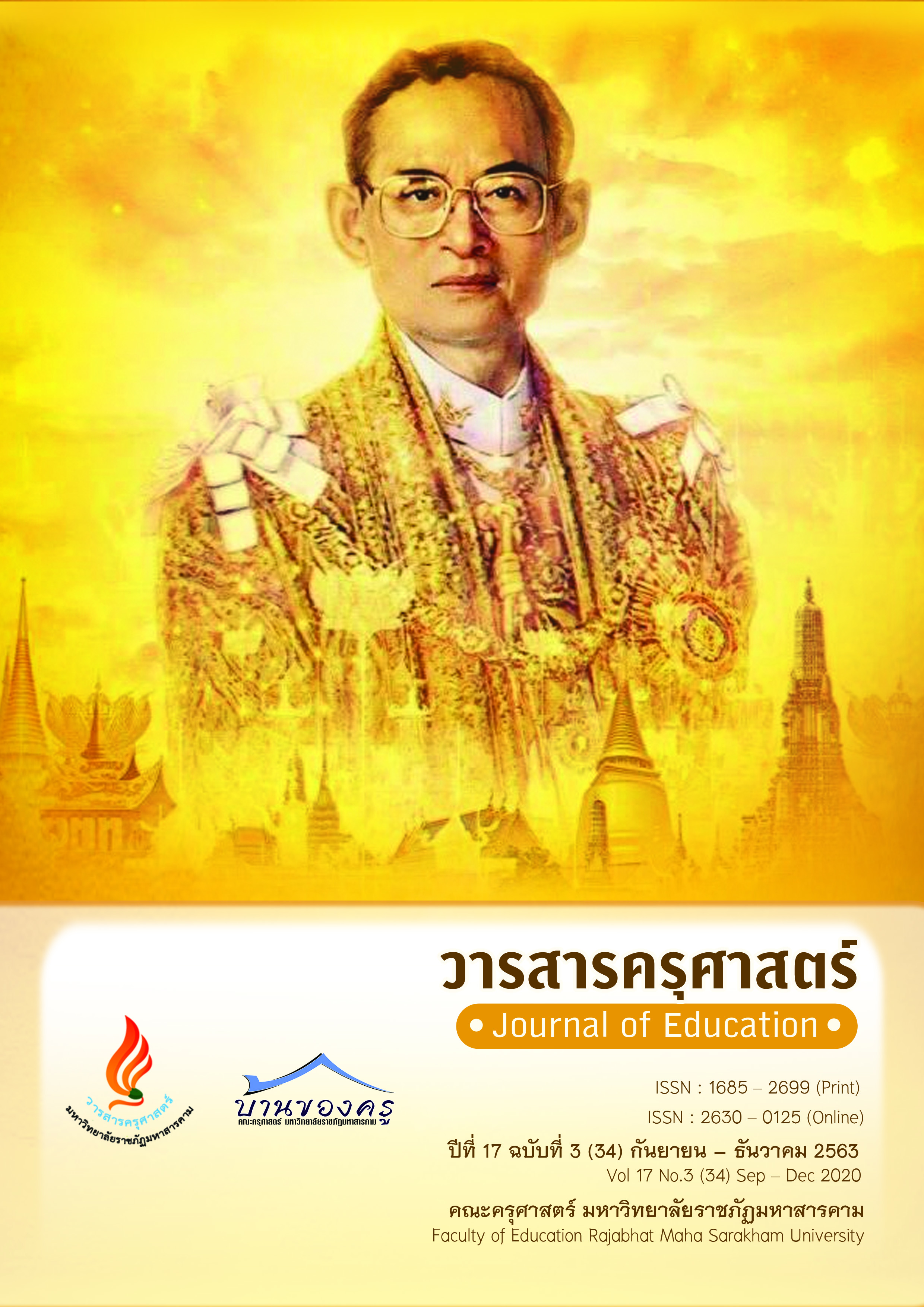Construction of Management Model for Developmentally Competencies of Students in Sport Management Program Using Community-Based Instruction
Main Article Content
Abstract
Abstract
The purpose of this research was to construct the management model for enhancing the competencies of sports management student with Community - Based Learning. The sample was 15 experts in administration and sport management selected by snow ball technique. The in-depth interviewing with semi-structural question was used to collect data. The data was analyzed by content analysis and then was constructed into the management model and operation manual. The confirmation on the suitability, feasibility and practicability of the model and operation manual were collected by rating scale questionnaire and then analyzed by descriptive statistics.
The results of the research could summarize that the constructed model to enhance the competencies of sports management students with Community - Based Learning The model consisted of 1) management functions of universality, faculty, student and community, 2) the plan , procedure and the manual to operate the learning system, 3) the competencies of sports management students 4) the cooperation with the selected community, 5) the test and evaluation of the project operation and competencies achievement of the students. The confirmation of model and the operation manual were highly accepted (4.55) to be suitable, feasible and practical by the stakeholders .
Article Details
ข้อกำหนดเบื้องต้นที่ผู้นิพนธ์(ผู้ส่งบทความ) ควรทราบ
1. ผู้นิพนธ์ที่ประสงค์จะลงตีพิมพ์บทความกับวารสาร ตั้งแต่เดือนมกราคม 2563 เป็นต้นไป ให้ใช้รูปแบบใหม่ (Template 2563) โดยสามารถดูตัวอย่างได้ที่เมนู GUIDELINES
2. จะตีพิมพ์และเผยแพร่ได้ ต้องผ่านการประเมินจากผู้ทรงคุณวุฒิ (Peer Review)
3. การประเมินบทความโดยผู้ทรงคุณวุฒิ (Peer Review) เป็นแบบ Double Blind
4. การอ้างอิงบทความใช้หลักเกณฑ์ APA (American Psychological Association) คลิก
5. บทความถูกปฏิเสธการตีพิมพ์ ไม่ผ่านการประเมิน ผู้นิพนธ์ขอยกเลิกเองหรือชำระเงินก่อนได้รับการอนุมัติ ทางวารสารไม่มีนโยบายการคืนเงิน
References
กมลฉัตร กล่อมอิ่ม. (2560). การจัดการเรียนรู้โดยใช้สมองเป็นฐานสำหรับนักศึกษาวิชาชีพครู สาขาพลศึกษา. 77-89.
กฤษดา ตามประดิษฐ์ .(2559). สมรรถนะมาตรฐานสำหรับบัณฑิตระดับปริญญาตรีสาขาการจัดการการกีฬา ปรัชญาดุษฎีบัณฑิตสาขาวิชาวิทยาศาสตร์การออกกำลังกายและการกีฬา คณะวิทยาศาสตร์การกีฬา มหาวิทยาลัยบูรพา
คัมภีร์ สุดแท้. (2553). การพัฒนารูปแบบการบริหารงานวิชาการสำหรับโรงเรียนขนาดเล็ก (วิทยานิพนธ์ปริญญาครุศาสตรดุษฎีบัณฑิต). มหาวิทยาลัยราชภัฏมหาสารคาม, มหาสารคาม.
ธีระพงษ์ แก้วหาวงษ์(2542). เทคนิคกระบวนการวางแผนแบบมีส่วนร่วม Mind Map & AIC for Participatory Planning. สืบค้นจาก http://www.prachasan.com/mindmapknowledge/aic.html
มณฑล จันทร์ แจ่มใส. (2558). โครงการถอดชุดประสบการณ์การจัดการเรียนรู้โดยใช้ชุมชนเป็น
ฐาน: กรณีศึกษาการบูรณาการการจัดการเรียนรู้วิชาออกแบบสถาปัตยกรรมกับการพัฒนาที่อยู่อาศัยของผู้มีรายได้น้อย. วารสารวิจัยราชภัฏพระนคร, 10(1), 143-156.
วิจารณ์ พานิช. (2557). การเรียนรู้เกิดขึ้นอย่างไร (พิมพ์ครั้งที่ 2). กรุงเทพมหานคร: มูลนิธิสยามกับมาจล.
ศิรินทร มีขอบทอง, มารุต พัฒผล, วิชัย วงษ์ ใหญ่ และจิตรา ดุษฎี เมธา. (2558).การพัฒนาหลักสูตรฝึกอบรมเพื่อพัฒนาสมรรถนะการเป็นผู้ประกอบการธุรกิจเริ่มใหม่เชิงสร้างสรรค์และนวัตกรรมสำหรับนักศึกษาระดับปริญญาตรีในมหาวิทยาลัยเอกชน. Journal of Industrial Education, 17(1), 61-68.
ศรีวรรณ ฉัตรสุริยวงศ์ และมาเรียม นิลพันธุ์. (2016). กระบวนทัศน์การจัดการเรียนรู้โดยใช้ชุมชนเป็นฐานเพื่อส่งเสริมความสามารถด้านการคิดอย่างมีวิจารณญาณและการแก้ปัญหาเชิงสร้างสรรค์สำหรับนักเรียนระดับ ประถมศึกษา. Silpakorn Educational Research Journal, 8(1), 183-197.
สำนักงานคณะกรรมการการอุดมศึกษา.(2552) .Workshop: การสัมมนาเชิงปฏิบัติการใน การพัฒนาการเรียนการสอนระบบ e-Learning, บริษัท การบินไทยจำกัด (มหาชน), 8-9 ตุลาคม 2552.
อานนท์ ศักดิ์วรวิชญ์. (2547). แนวคิดเรื่องสมรรถนะ: เรื่องเก่าที่เรายังหลทาง.Chulalongkorn Review, 16(64), 57–72.
อุทุมพร จามรมาน. (2541). โมเดลคืออะไร. วารสารวิชาการ,1(2), 22-25.


